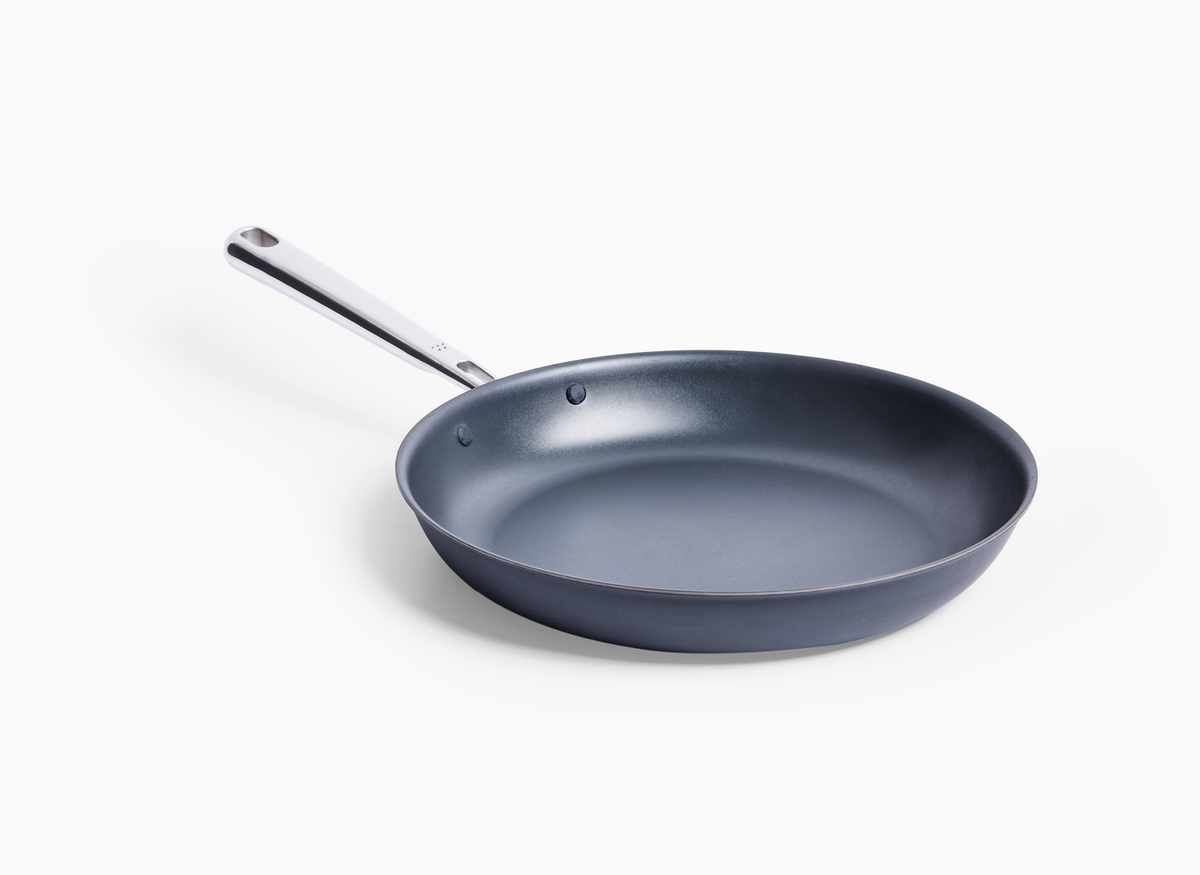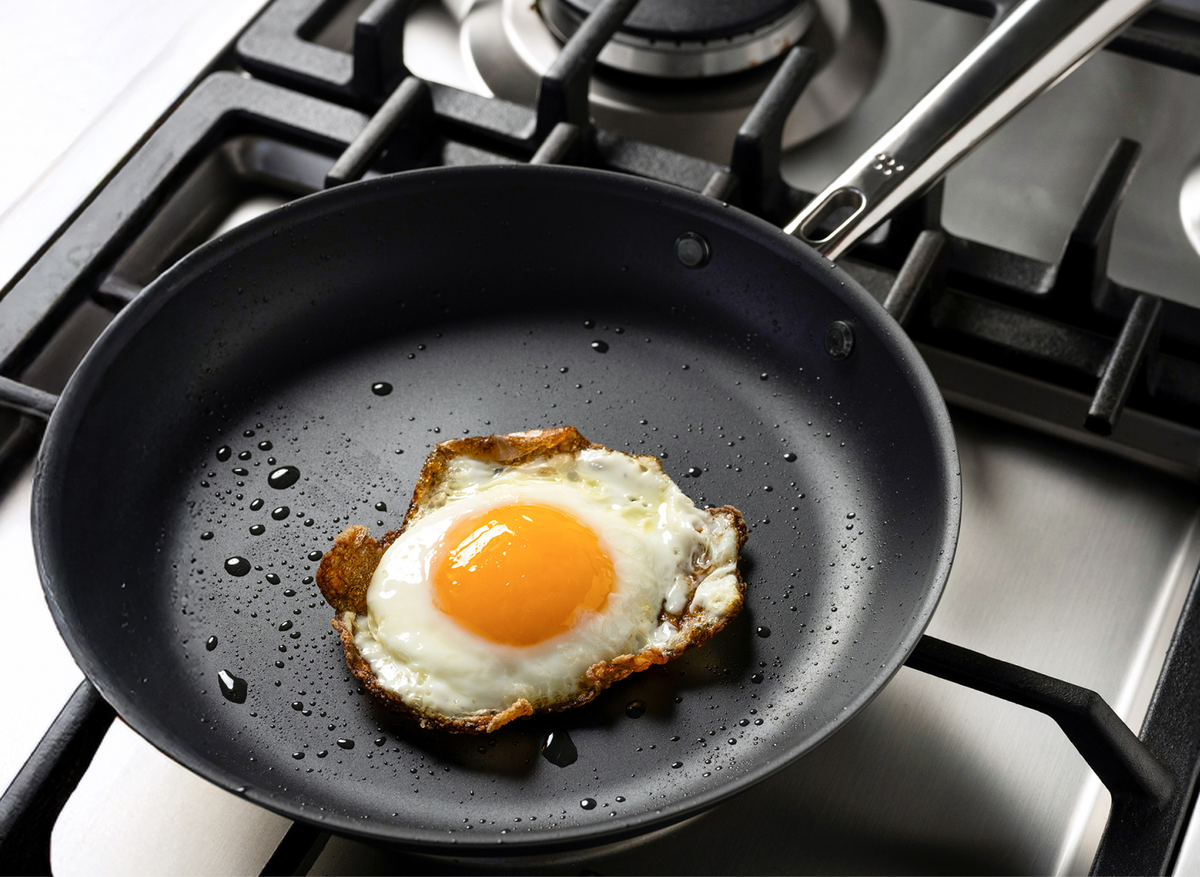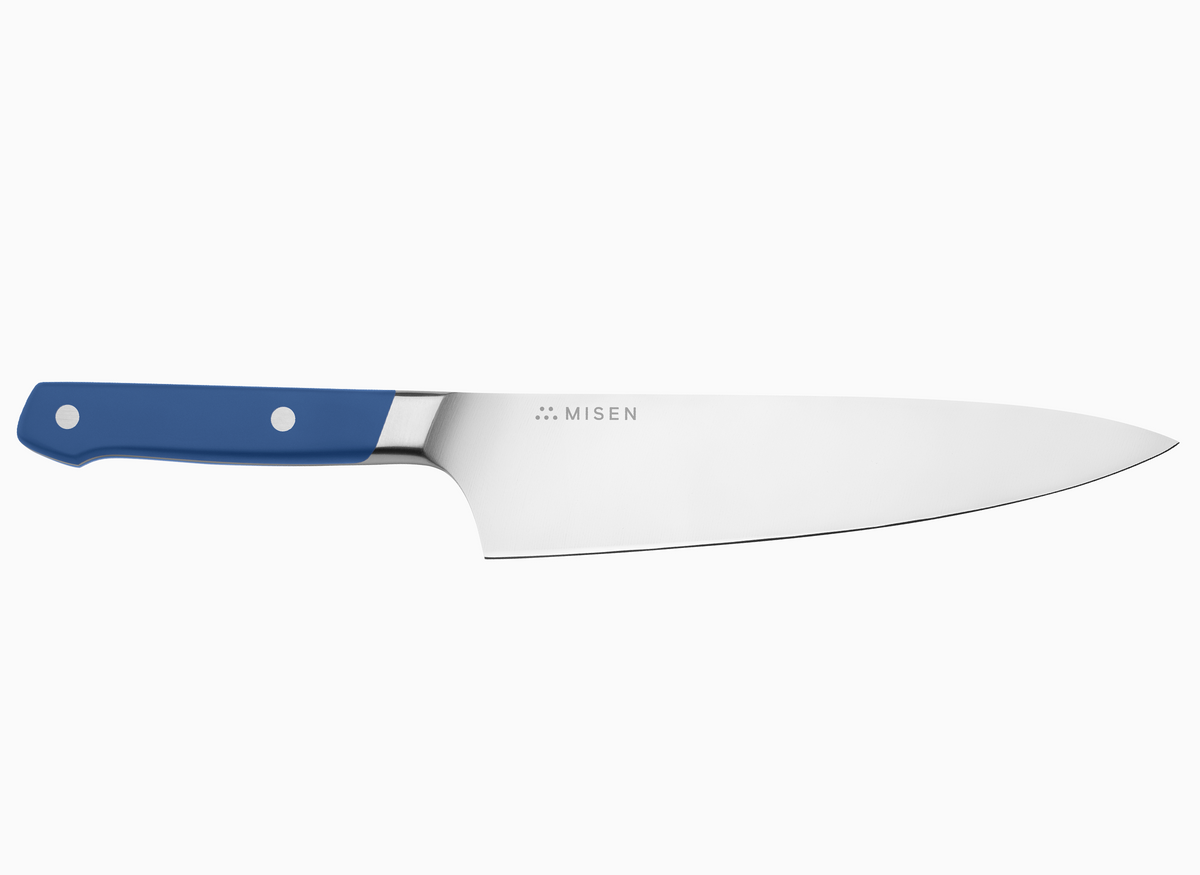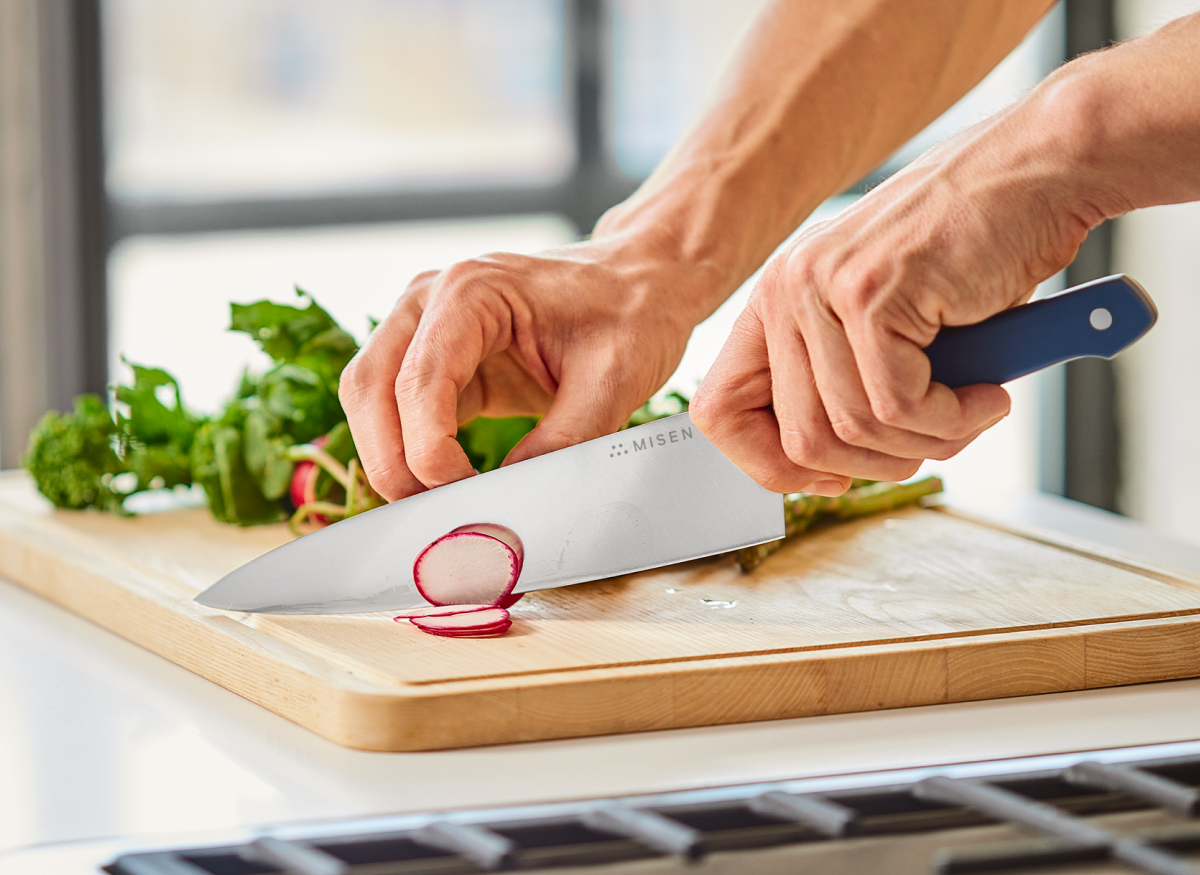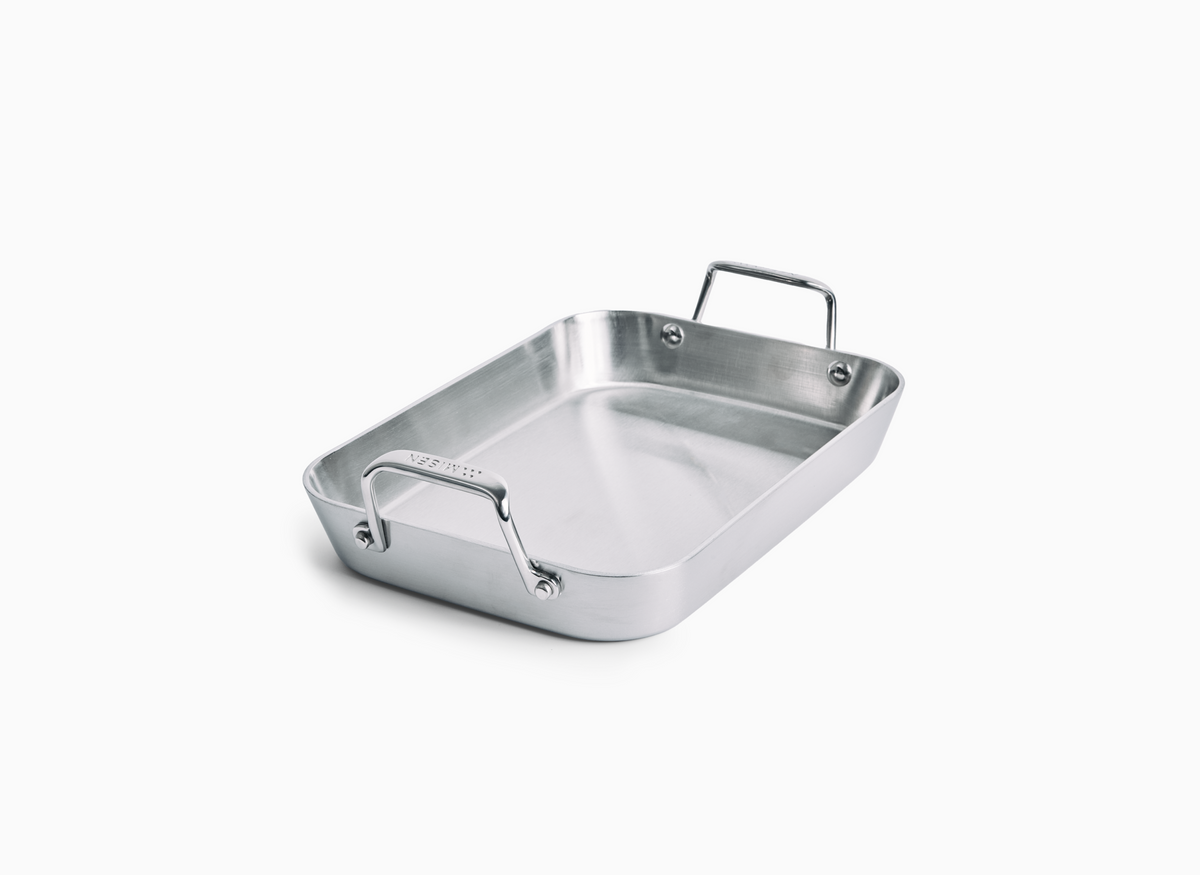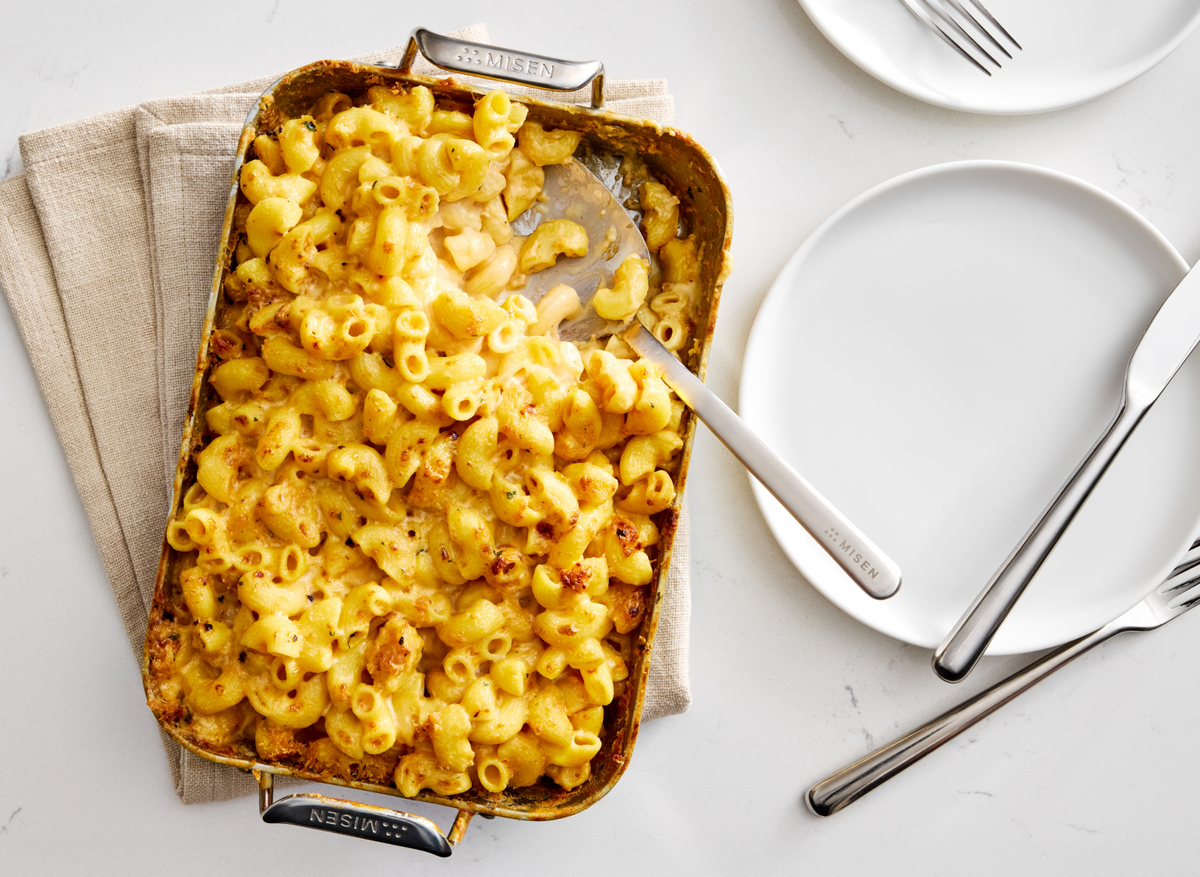What’s this mean in practice? The 20-degree Western edge is slightly more resistant to wearing down,, while the narrower 15-degree Japanese angle feels sharper and cuts more deftly, all else being equal. But since the point of the blade is sharper, it dulls a little more quickly depending on the steel type.
To compensate, many Japanese-style knives are made from harder steel, which doesn’t wear down as easily. Some knives in this category also have a “single bevel”—that is, one side of the knife edge’s V is vertical, and the other one meets it at a narrow angle. This asymmetrical construction is extra sharp, but difficult to sharpen.
What about Misen knives? By combining a 15-degree edge angle (from Japanese-style knives) with the hard, durable AUS10 high-carbon steel and symmetrical grind of a Western-style blade that’s suitable for both right- and left-handed cooks, Misen knives were designed to combine the best of both worlds.
